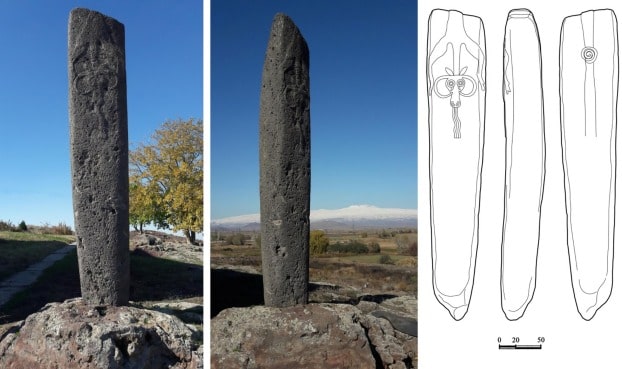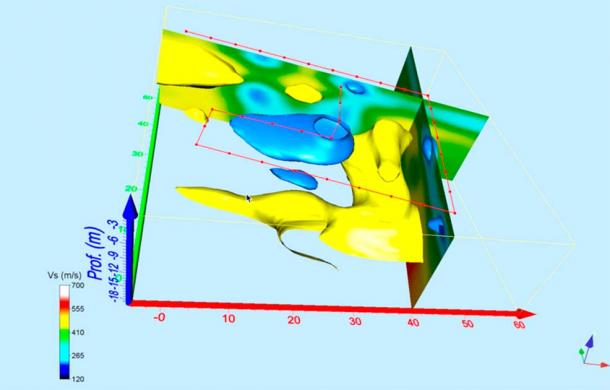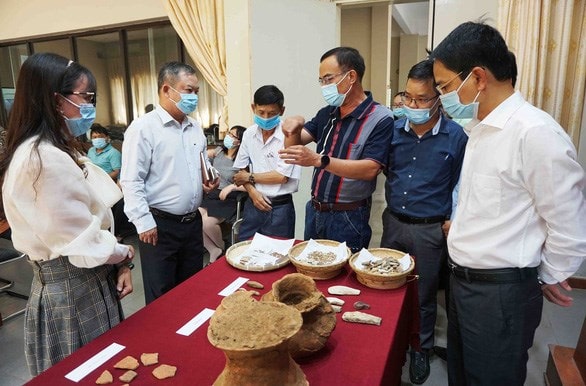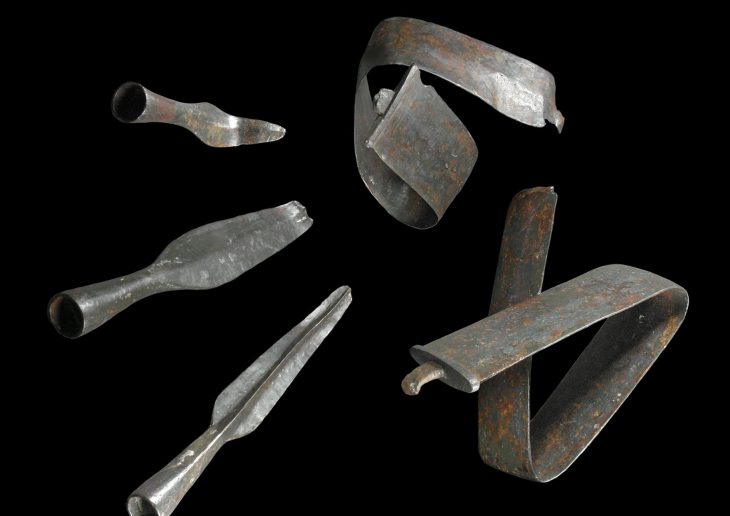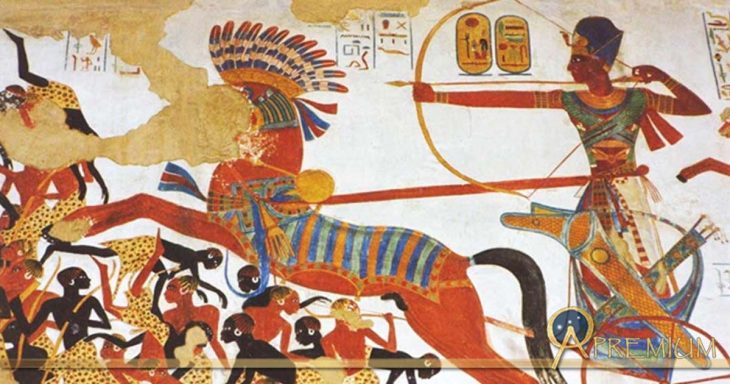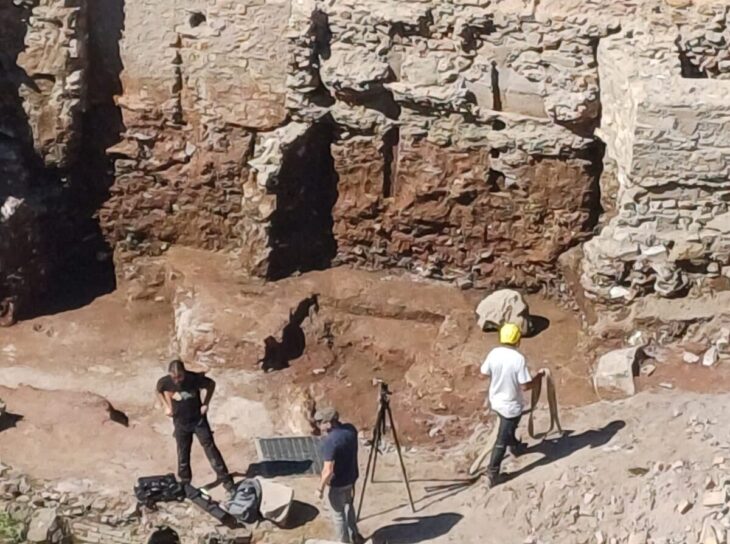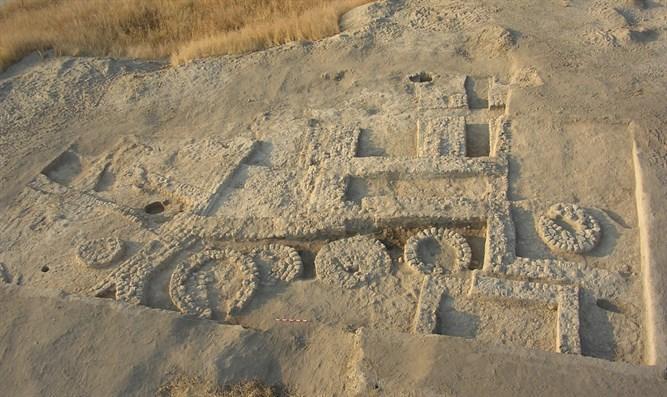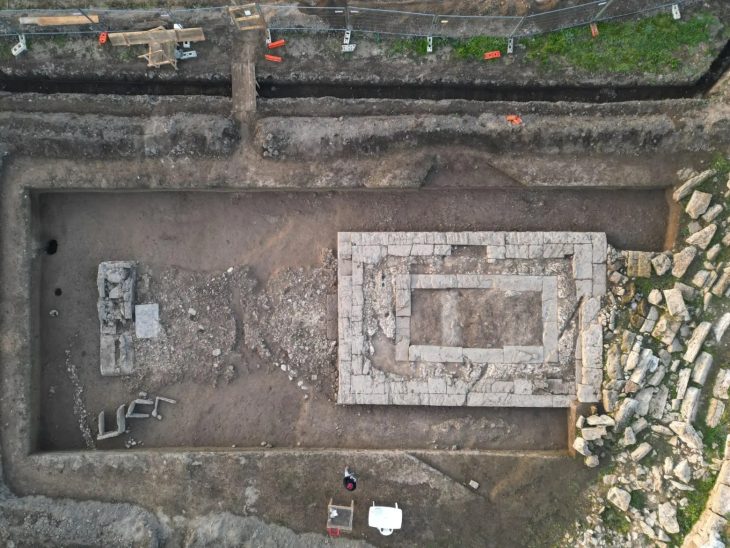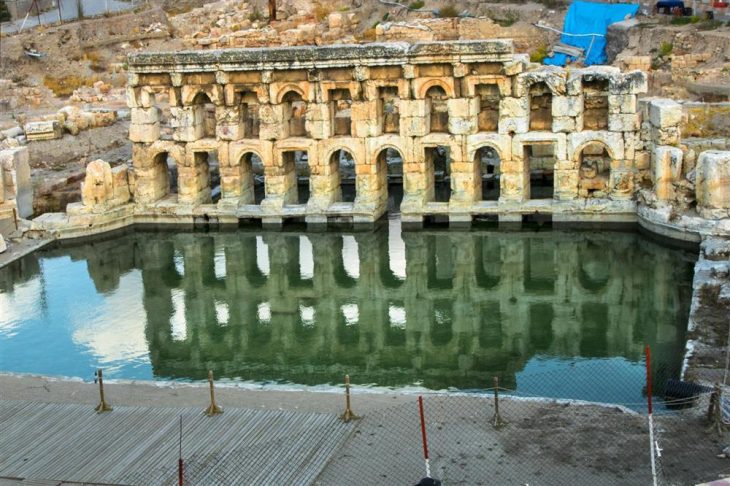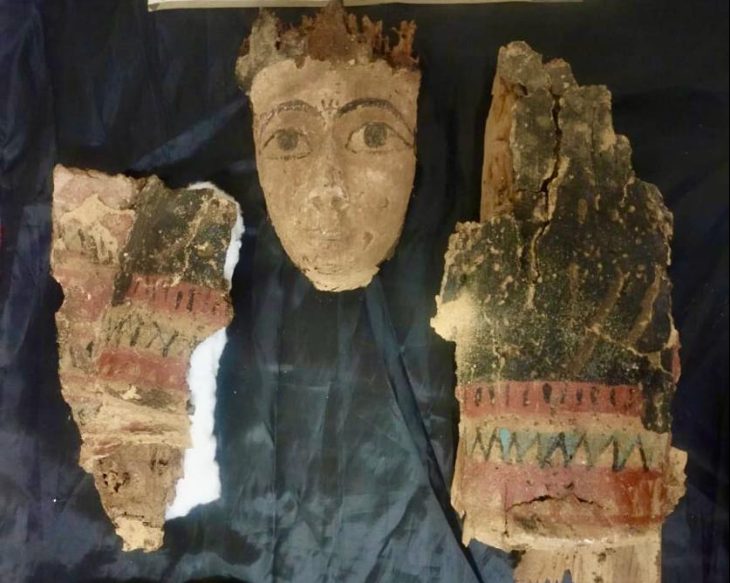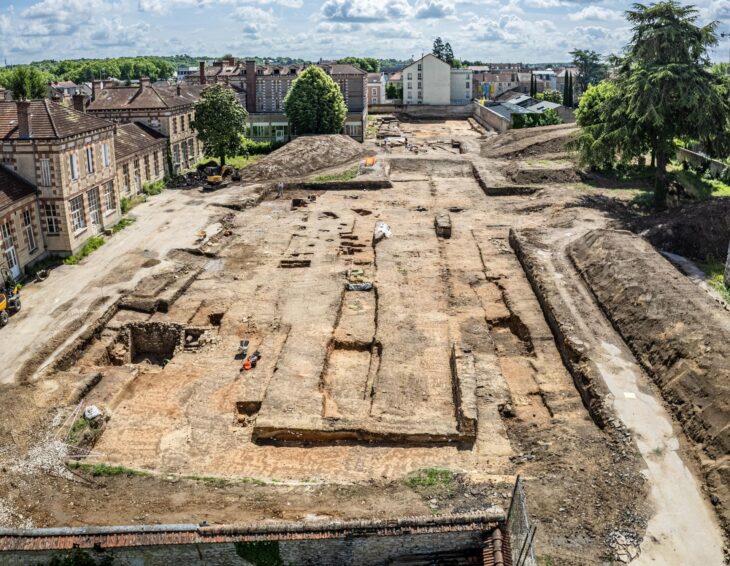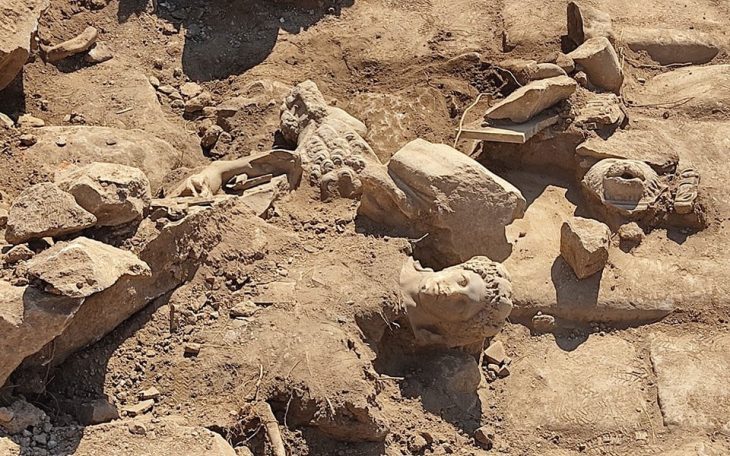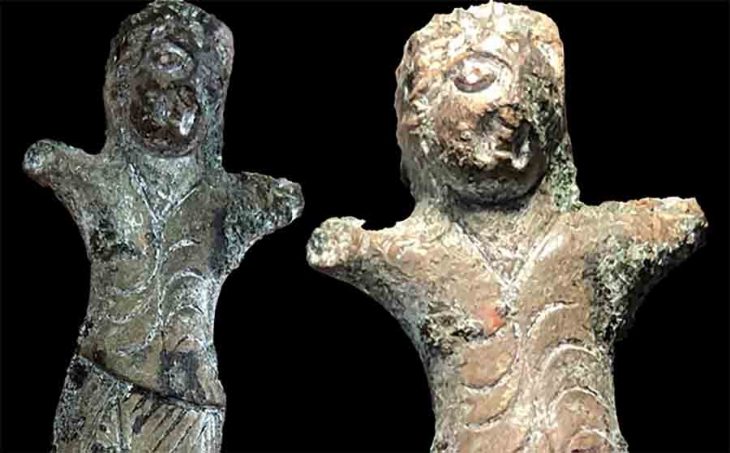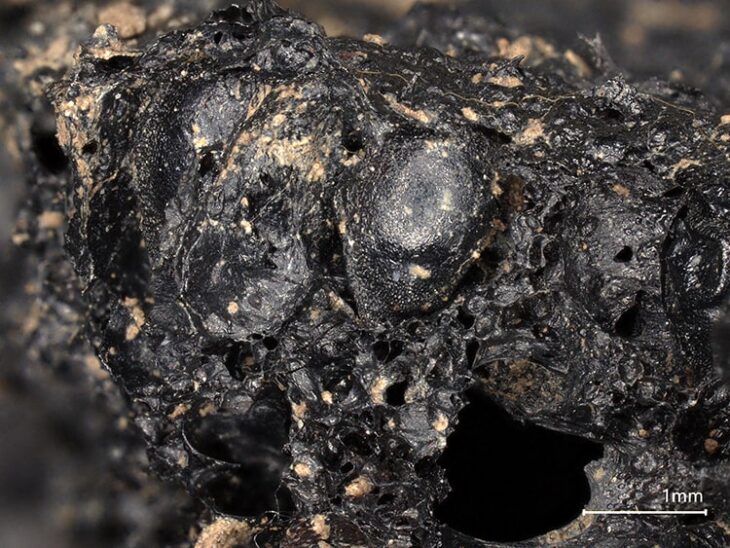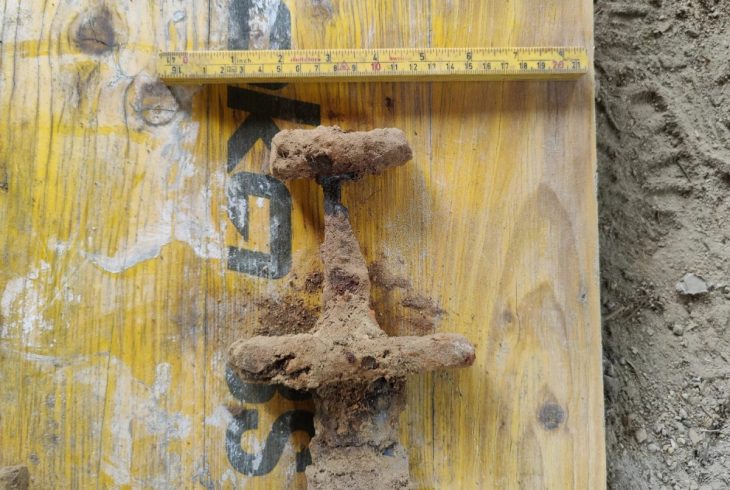An international team of researchers has unearthed the remains of an adult woman and two infants buried under a basalt monument known as a dragon stone at the Lchashen site in Armenia.
The dragon stones, “serpent-stones” or Vishapakar are prehistoric basalt stelae carved with animal images, predominantly found in Armenia and its surroundings. Their name derives from old Armenian folklore and no one really knows why exactly they are called the Dragon Stones.
Approximately 150 have been documented. More than ninety in the Republic of Armenia, the remaining ones in adjacent areas. They range in height from about 150 to 550 cm.
Archaeologists have identified three types of dragon stones: those with carvings resembling fish (piscis); those that resemble the remains of bovids, such as goats, sheep, cows, and so forth (vellus); and hybrid dragon stones, which combine the two types.
The discovery in Lchashen offers a new perspective, as the three-and-a-half meter tall stele with the image of a sacrificed ox ( vellus type ) was found over a burial dating from the 16th century BC.
One of the most significant archaeological sites in Armenia, Lchashen is well-known for its profusion of Bronze Age artifacts. This site’s excavations have uncovered many artifacts, including intricate funerary structures, metal tools, and pottery.
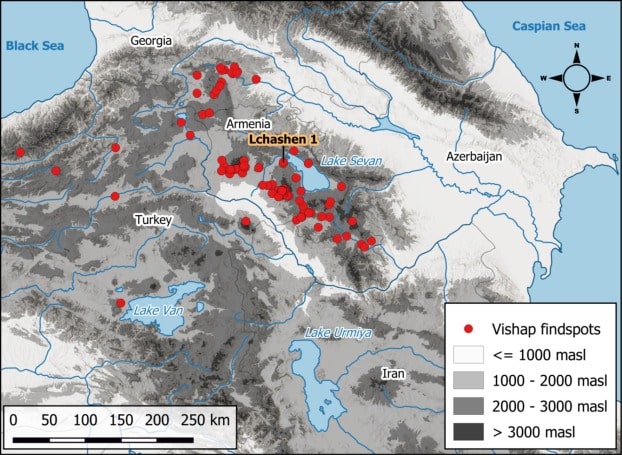
That is, however, the first instance of a burial being discovered in close proximity to a dragon stone, which is uncommon given the regional funerary contexts. This link between the interment of infants and a highly esteemed monument raises the possibility of a ritual or symbolic significance that is currently unclear.
The stone was discovered in 1980. After initial examination of the stone in situ, it and other materials excavated from the burial site were transported to the Metsamor Historical-Archaeological Museum-Reserve. It contained artifacts, animal bones, and the remains of a human skeleton (believed to be that of an adult woman).
Unfortunately, the woman’s bones are now missing. They were reportedly sent to Russia in the 1980s for further examination and have not been found since. But the bones of the two infants, known as Dragon1 and Dragon2, remain. They were not even mentioned in the initial publications about this barrow.
The two babies, who were between the ages of 0 and 2 months, had well-preserved remains. Ancient DNA analyses on these remains showed that they were second-degree relatives with identical mitochondrial sequences, indicating a close relationship. These people’s genetic ancestry profiles also revealed commonalities with other Bronze Age people from the area, offering important insights into the genetic makeup of prehistoric populations in the Caucasus.
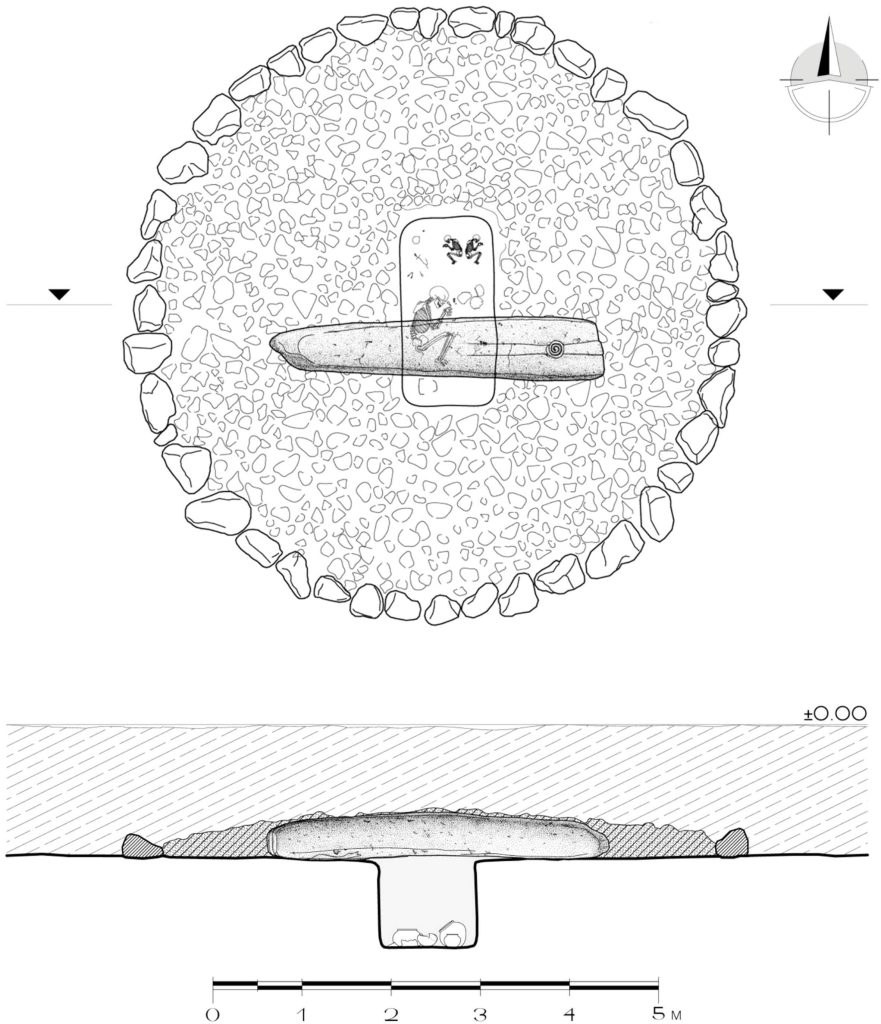
This discovery has multiple implications. First, the connection between the burials and the dragon stones raises the possibility that these monuments served a purpose other than decoration or remembrance, such as ritual or funerary.
As the researchers explain: “The event envisaged by the burial is in any case exceptional, both from the point of view of genetics and from the archaeological viewpoint. In Late Bronze Age Armenia in general and at Lchashen in particular, burials of children are rare and the burial of two newborns combined with a monumental stela is unique.”
Stelae were sometimes used to mark graves in the South Caucasus, but none of the 454 Bronze Age graves excavated at Lchashen were marked by any type of stele, the researchers wrote in their paper. Only this grave was marked with a dragon stone.
The presence of infant remains under such a monolith also raises questions about the funerary practices and beliefs related to death and the afterlife in Bronze Age society in Armenia.
The study is published in the Journal of Archaeological Science: Reports.
doi.org/10.1016/j.jasrep.2024.104601
Cover Photo: A. Hakhverdyan

